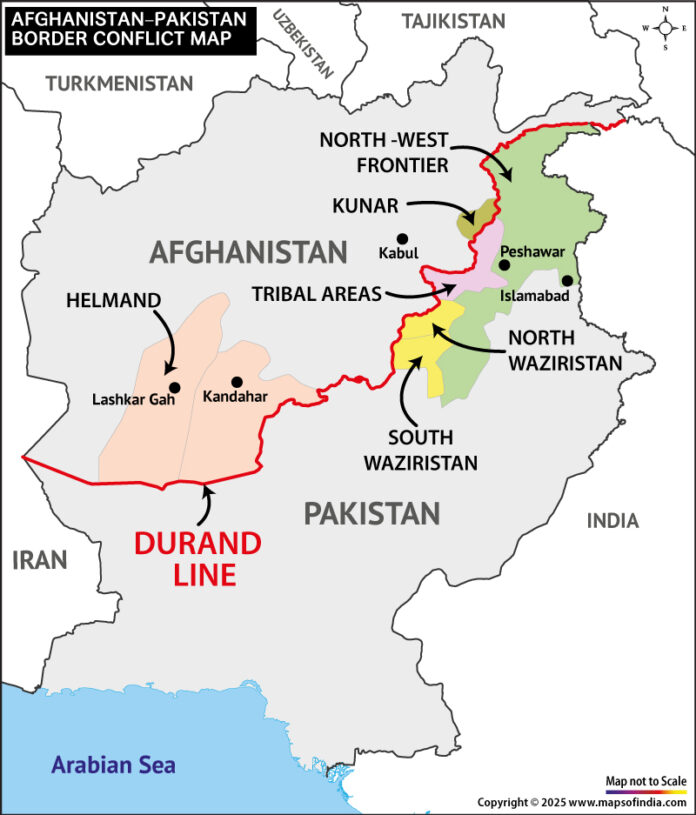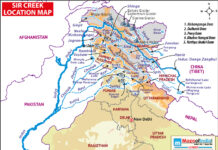
The Pakistan-Afghanistan Durand Line is among the most complicated and the oldest border conflicts in South Asia. It entails historical, political and ethnic problems that have endured in the bilateral relations between the two nations.
Historical Background of the Durand Line
In the year 1893, the Durand Line was formed when the British colonized India. It was signed by Sir Mortimer Durand, the representative of British India and Emir Abdur Rahman Khan, who ruled Afghanistan. The treaty was to formalize the border between Afghanistan and British India and the areas of their influence.
The Durand Line extends today to an approximate distance of 2640 kilometres through mountainous terrain and tribal areas. It separates the ethnic population of the Pashtun that was historically distributed on both sides of the border, and the boundary can be a cause of cultural and political conflicts.
Why Afghanistan Rejects the Durand Line
The Durand Line has never actually been recognized as an international boundary in Afghanistan. According to Afghan leaders, the agreement was not designed to be permanent but rather temporary and was put in place on colonial conditions. On their part, the border has been seen to unreasonably separate the Pashtun people and encroach on the sovereignty of Afghanistan.
The position of Afghanistan has remained the same in various governments, and the Durand Line has been the source of perpetual conflict in Pakistani-Afghanistan relations. Most Afghans consider it a remnant of colonialism that must be renegotiated or eliminated.
Pakistan’s Perspective on the Border
The Durand Line is one of the internationally recognized boundaries of Pakistan, which was left behind by British India upon gaining independence in 1947. Pakistan asserts that the border is essential to national security and territorial integrity, especially in the tribal belt, where insurgencies are the norm.
By understanding the Durand Line, Pakistan is also able to bolster its jurisdiction and law on the border. In the eyes of Islamabad, any threat to this boundary is a menace to its sovereignty and stability.
Geopolitical Implications
The conflict has significant geopolitical implications. The border is porous, thus it is hard to check the cross-border flow of militants and smugglers. Such a non-recognition of Afghanistan has sometimes led to diplomatic strains, such as security co-operation, trade and regional stability.
The bilateral negotiations and border security agreements have managed to contain tensions, but the conflict is yet to be resolved. The Durand Line also still influences both the domestic politics of Afghanistan and the foreign policy of Pakistan.
Conclusion
The Durand Line dispute is not simply a border dispute; it carries with it historical backgrounds, ethnicity and historical and current security concerns. Although Pakistan and Afghanistan have a cultural and historical connection, the Durand Line is still a burning issue that defines their relationship.
The only permanent solution would be diplomatic negotiation, mutually recognized and the needs of border communities. The Durand Line will remain an important issue in the geopolitics of South Asia until that moment.



